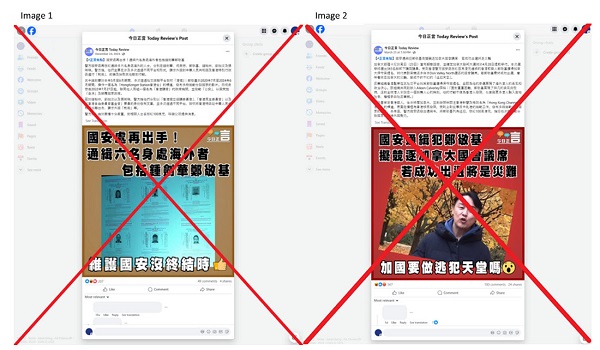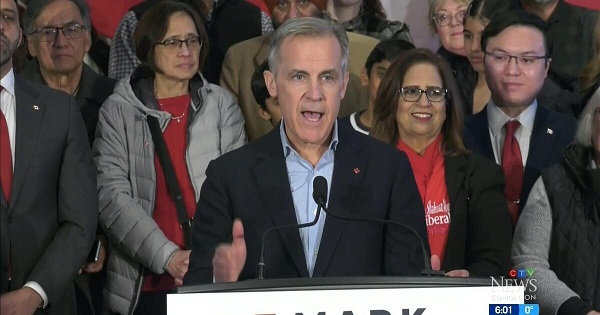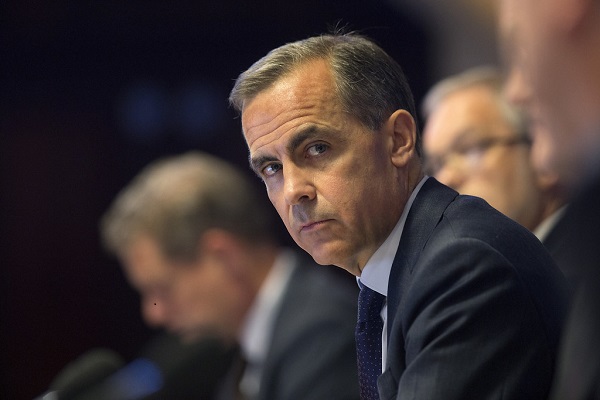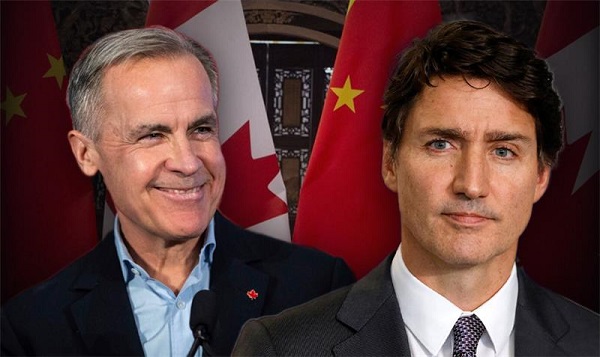Alberta
Alcohol sales in grocery and convenience stores would benefit Albertans

From the Fraser Institute
By Alex Whalen
Earlier this year, the Smith government confirmed that a panel of MLAs has been exploring the idea of allowing grocery and convenience stores to sell alcohol. Since then, there’s been no new developments. But despite misleading claims from some groups resisting the move, greater retail access would benefit consumers.
Alberta’s fully-private retail market for alcohol is unique within Canada. Following privatization of alcohol retail in 1993, consumers in Alberta have benefitted from greater choice and convenience in the absence of government-owned retail outlets. However, the provincial government still controls which private operators can sell alcohol, and generally prohibits the sale in convenience and grocery stores.
But expansion into grocery and convenience stores simply makes sense. Individual retailers should decide where to sell (or not sell) alcohol to cater to consumer preferences rather than have terms dictated by government. As the footprint of government has expanded in Alberta, policymakers should remember what are the core functions of government, and what’s best left to the private sector. And there’s no good reason for government to dictate which stores can sell alcohol.
Again, some groups including the Canadian Centre for Policy Alternatives claim that Albertans pay higher prices for alcohol under privatization, yet this claim simply doesn’t add up.
First, these groups typically use average prices across Canada to support this claim. But average prices across Canada—which includes provinces with strict government controls of alcohol sales—are meaningless because the mix of products in Alberta has changed. In post-privatization Alberta, retailers and consumers come together in a market to set prices. Consumers may willingly pay more for alcohol in Alberta because they find higher quality products, more convenient locations and/or better store hours than in other provinces.
Rather, what matters are not “average prices” but minimum prices and the ability to find the product you desire at the lowest available price. One comparison of nearly 2,000 products between Alberta and British Columbia (which maintains a more government-controlled system of retail) using minimum prices estimated that 83 per cent of beer, wine and spirits were available at cheaper prices in Alberta.
Moreover, liquor store locations have also become more convenient for Albertans. In 2018 (the latest year of available data), 64 per cent of Albertans lived within a kilometre of a liquor store—by far the highest percentage of any province in Canada and much higher than the 26 per cent in Ontario, which has government-operated liquor stores. In the United States, three-quarters of Americans are served by a private liquor retailing system, and privatized states have 50 per cent more liquor stores per capita than those where government controls sales.
And Alberta’s liquor product selection has expanded from 2,200 in 1993 to more than 31,000 varieties of beer, wine and spirits today. By comparison, Ontarians have at least 6,000 fewer products available.
Finally, critics claim that privatization leads to increases in social problems that arise from alcohol consumption. However, the leading study of Alberta’s 1993 privatization found no evidence of increased social problems such as impaired driving or other alcohol-related offenses.
Alberta has led the way in promoting consumer choice in what is otherwise a strictly controlled market for alcohol in Canada. To strengthen this advantage, the Smith government should continue to remove unnecessary restrictions for the benefit of Albertans.
Author:
Alberta
Made in Alberta! Province makes it easier to support local products with Buy Local program

Show your Alberta side. Buy Local. |
When the going gets tough, Albertans stick together. That’s why Alberta’s government is launching a new campaign to benefit hard-working Albertans.
Global uncertainty is threatening the livelihoods of hard-working Alberta farmers, ranchers, processors and their families. The ‘Buy Local’ campaign, recently launched by Alberta’s government, encourages consumers to eat, drink and buy local to show our unified support for the province’s agriculture and food industry.
The government’s ‘Buy Local’ campaign encourages consumers to buy products from Alberta’s hard-working farmers, ranchers and food processors that produce safe, nutritious food for Albertans, Canadians and the world.
“It’s time to let these hard-working Albertans know we have their back. Now, more than ever, we need to shop local and buy made-in-Alberta products. The next time you are grocery shopping or go out for dinner or a drink with your friends or family, support local to demonstrate your Alberta pride. We are pleased tariffs don’t impact the ag industry right now and will keep advocating for our ag industry.”
Alberta’s government supports consumer choice. We are providing tools to help folks easily identify Alberta- and Canadian-made foods and products. Choosing local products keeps Albertans’ hard-earned dollars in our province. Whether it is farm-fresh vegetables, potatoes, honey, craft beer, frozen food or our world-renowned beef, Alberta has an abundance of fresh foods produced right on our doorstep.
Quick facts
- This summer, Albertans can support local at more than 150 farmers’ markets across the province and meet the folks who make, bake and grow our food.
- In March 2023, the Alberta government launched the ‘Made in Alberta’ voluntary food and beverage labelling program to support local agriculture and food sectors.
- Through direct connections with processors, the program has created the momentum to continue expanding consumer awareness about the ‘Made in Alberta’ label to help shoppers quickly identify foods and beverages produced in our province.
- Made in Alberta product catalogue website
Related information
Alberta
Province to expand services provided by Alberta Sheriffs: New policing option for municipalities

Expanding municipal police service options |
Proposed amendments would help ensure Alberta’s evolving public safety needs are met while also giving municipalities more options for local policing.
As first announced with the introduction of the Public Safety Statutes Amendment Act, 2024, Alberta’s government is considering creating a new independent agency police service to assume the police-like duties currently performed by Alberta Sheriffs. If passed, Bill 49 would lay additional groundwork for the new police service.
Proposed amendments to the Police Act recognize the unique challenges faced by different communities and seek to empower local governments to adopt strategies that effectively respond to their specific safety concerns, enhancing overall public safety across the province.
If passed, Bill 49 would specify that the new agency would be a Crown corporation with an independent board of directors to oversee its day-to-day operations. The new agency would be operationally independent from the government, consistent with all police services in Alberta. Unlike the Alberta Sheriffs, officers in the new police service would be directly employed by the police service rather than by the government.
“With this bill, we are taking the necessary steps to address the unique public safety concerns in communities across Alberta. As we work towards creating an independent agency police service, we are providing an essential component of Alberta’s police framework for years to come. Our aim is for the new agency is to ensure that Albertans are safe in their communities and receive the best possible service when they need it most.”
Additional amendments would allow municipalities to select the new agency as their local police service once it becomes fully operational and the necessary standards, capacity and frameworks are in place. Alberta’s government is committed to ensuring the new agency works collaboratively with all police services to meet the province’s evolving public safety needs and improve law enforcement response times, particularly in rural communities. While the RCMP would remain the official provincial police service, municipalities would have a new option for their local policing needs.
Once established, the agency would strengthen Alberta’s existing policing model and complement the province’s current police services, which include the RCMP, Indigenous police services and municipal police. It would help fill gaps and ensure law enforcement resources are deployed efficiently across the province.
Related information
-

 2025 Federal Election1 day ago
2025 Federal Election1 day agoOttawa Confirms China interfering with 2025 federal election: Beijing Seeks to Block Joe Tay’s Election
-

 Energy2 days ago
Energy2 days agoIndigenous-led Projects Hold Key To Canada’s Energy Future
-

 2025 Federal Election1 day ago
2025 Federal Election1 day agoHow Canada’s Mainstream Media Lost the Public Trust
-

 Energy2 days ago
Energy2 days agoMany Canadians—and many Albertans—live in energy poverty
-

 Business2 days ago
Business2 days agoCanada Urgently Needs A Watchdog For Government Waste
-

 2025 Federal Election14 hours ago
2025 Federal Election14 hours agoBREAKING: THE FEDERAL BRIEF THAT SHOULD SINK CARNEY
-

 2025 Federal Election1 day ago
2025 Federal Election1 day agoReal Homes vs. Modular Shoeboxes: The Housing Battle Between Poilievre and Carney
-

 2025 Federal Election15 hours ago
2025 Federal Election15 hours agoCHINESE ELECTION THREAT WARNING: Conservative Candidate Joe Tay Paused Public Campaign




